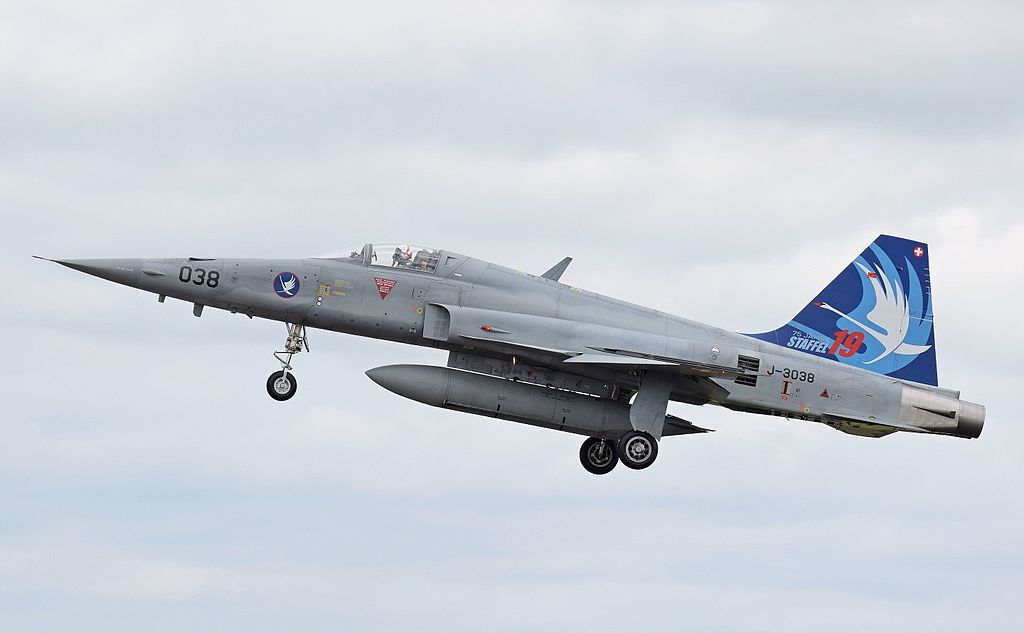“Just as the first words from the radar operator came in “ten miles long final, gear down”, I felt a heavy blow, as though a hammer hit my left thigh,” said Urs Ramel, Swiss Air Force F-5 Pilot.
Northrop developed the F-5 in February 1965, intending to export it through the Military Assistance Program (MAP). This aircraft was first proposed as a lightweight fighter option for the United States, but it quickly gained enormous popularity as an export and found a place in the foreign market. In December 1970, Northrop began development and production on the F-5A-21, an aircraft design that emphasized maneuverability rather than high speed and was officially reclassified as the F-5E.
The Swiss Air Force, which currently employs 22 F-5E and four F-5F aircraft—down from a peak of 98 and 12 in 1981—was and is still extensively using the aircraft. Switzerland purchased the aircraft because of its excellent performance, suitability for the unique Swiss Air Force, mission, and relatively low maintenance cost per flight hour.
The Tiger is an exceptionally sturdy aircraft too, as Urs Ramel, an F-5 pilot with the Swiss Air Force, explains in Peter Lewis’s book Swiss Tiger Parallel Flight:
“Having flown two-morning missions during training sessions from Dübendorf, I knew that storm-like precipitation and strong turbulence was embedded in an 8’000 meter cloud formation.
“During a lunchtime coffee break, a discussion began on how a lightning strike had penetrated a Tiger’s cockpit and hit the pilot in his thigh just before midday. I had been warned… After an interception mission “on top” at 30’000 feet, we followed a GCA approach in formation through varying cloud densities. While reducing speed before the talk down, we hit strong turbulence and very heavy rain.
“I could hardly make out the outline of my wingman in my mirrors. Just as the first words from the radar operator came in “ten miles long final, gear down,” I felt a heavy blow, as though a hammer hit my left thigh. For a microsecond, I saw a pencil-like vertical streak of lightning in front of me in the cockpit. “Fly the airplane,” I told myself, scared, and in the following half a minute, it took all my concentration to focus on the instruments to keep within limits. A quick glance around the cockpit confirmed that everything was seemingly OK, and when I looked over to my wingman, I was relieved to see that he was still glued to my wingtip as he should be and was nodding his head.
“I reported my status to the operator and we continued the approach without any further issues for a successful landing. My wingman registered his own lightning strike as a hard.. muffled hit, with an impact just above his left eye. Both airplanes had multiple lightning entry and exit points, with rivets that looked like they’d been soldered.
“Right after the flight, we were taken to the Air Force Medical Center (FAI) for examination. We both had painful five Franc coin-sized bruises: my wingman’s on his forehead, mine on my thigh. Our bruises may have disappeared within an hour, but that day—March 21, 1986—has left a mark in both of our memories forever.”

Photo by Peng Chen and Myself (Adrian Pingstone) via Wikipedia

